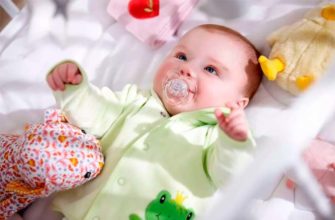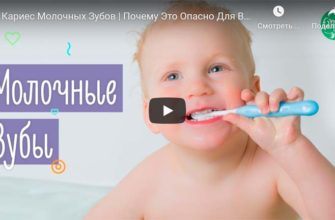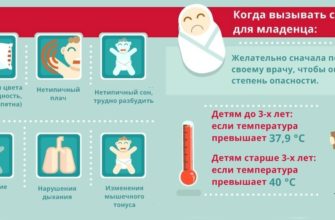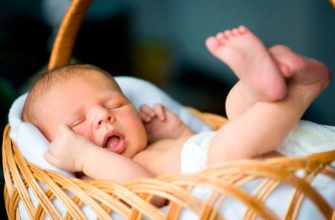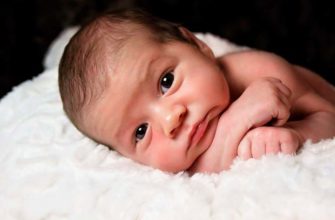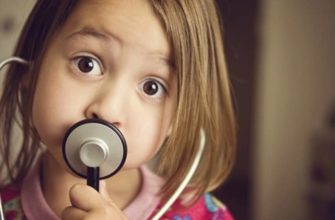In newborns, the disease does not proceed like in older children, therefore, first of all, the pediatrician should examine the baby. What to do at a high temperature in an infant depends on its causes, and they can be very different - from age-related characteristics and overheating to transient fever and intestinal infections.
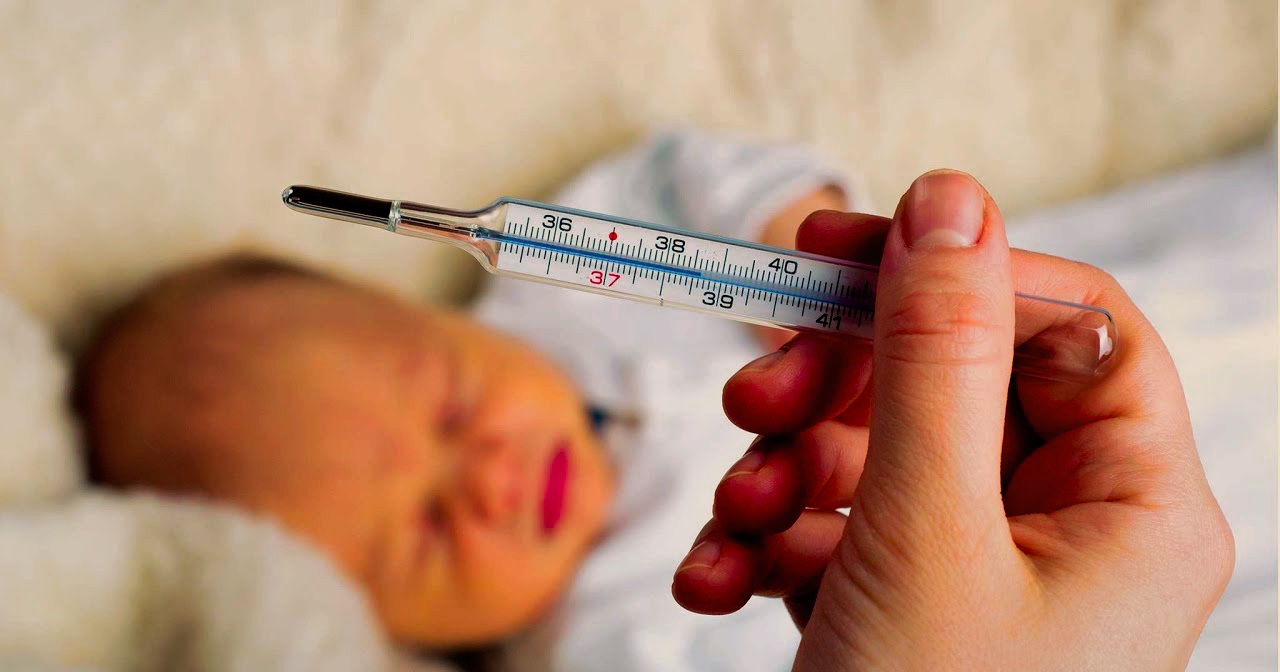
Baby just born
You should not sound the alarm if, immediately after birth, the baby has a temperature of 37 degrees or slightly higher. This is not a symptom of a disease or intrauterine infection. It’s just that the child was just recently in his mother’s stomach, and it’s warmer there than outside. Therefore, a temperature of 0.1-0.6 degrees above normal 36.6 is allowed. In half an hour - an hour, the temperature will begin to drop and in the next few hours it may drop by 1.5-2.5 degrees, which is also absolutely normal.
The fact is that the baby’s body does not yet work at full strength. It is difficult for him to maintain the temperature at 36.6 degrees, when around only 23-24 degrees, from here such differences, but soon everything will return to normal. In a healthy newborn, the temperature is set at 36.6-37 degrees maximum a day after birth. If it falls below 36 degrees, the child is clearly weakened, in which case the doctor should examine him.
It's very hot for a child
When the baby is born, he has not yet established a system of autonomous thermoregulation, due to which the normal temperature of the human body is maintained. This system is formed during the first 3 months of a child’s life. If it is hot for an adult, the sweat that evaporates evaporates and cools the skin, but this does not happen in the baby, because its sweat glands are not yet developed. Therefore, the baby overheats and does not sweat.
Moms should know that newborns tolerate overheating worse than cold. Overheating provokes dehydration, circulatory disorders, decreased immunity, fever in the absence of any disease. No need to wrap the baby too much!
Transient fever
On the night of the 3rd to 4th day of life, the baby’s temperature can rise to 39-40 degrees, but it drops in 3-4 hours. Sometimes a child sleeps calmly all this time, so parents do not notice anything.
If the baby woke up after a rise in temperature and cried, you should not panic.This is a transient fever, which is a normal physiological phenomenon and passes on its own, without requiring medical intervention. The temperature rises with the maximum weight loss, and in the first days of life, the child loses about 6-10% of the original body weight with which he was born. This is also normal.
The very name "transient" means "temporary, fleeting." Healthy babies can easily tolerate such a fever. He can just prank, eat less than expected, or even refuse the next feeding.
Vaccine response
An increase in temperature often occurs in infants after a routine DTP vaccination against pertussis, diphtheria and tetanus, which is placed three times - at the age of 3, 4,5 months and six months. There is no need to worry in such cases. Fever is a normal reaction to a vaccine given that the fever subsides the next day.
One-year-olds are vaccinated against measles, rubella and mumps. On the 5-6th day after vaccination, the temperature may rise, and on the 8-10th day it can sometimes be very high. However, this is a natural physiological reaction of the body, if the general condition of the crumbs remains satisfactory. If the baby's condition worsens, you need to call a doctor. Perhaps everything is fine, but it is better to play it safe and let the specialist examine the child.
We also read: Is a rise in temperature in a child after vaccination a normal occurrence or an alarm?
Teething
The lower incisor appears first, this usually occurs at six months of age. Subsequently, each month is cut one at a time, and sometimes even 2 teeth. The fact that the teeth begin to erupt is indicated by an increased temperature, and with it - poor appetite, diarrhea, constant crying. Immunity at such a time weakens, so the risk of catching an infection increases.
Age features
Babies under 4 months of age cannot have a high temperature due to the appearance of the first teeth, as they begin to erupt later. In children aged 1 year, physiological fever does not occur, because it is characteristic of the first days of life, when normal microflora actively populates the skin and mucous membranes.
Therefore, when determining the cause of heat in a child, it is important to take into account the age of the baby, after which it is necessary to act by exclusion. First of all, it is necessary to exclude overheating, then establish whether the baby is sick with the flu: in infants the flu is much less common than in adults, and often occurs with normal readings of the thermometer. This is a feature of this infection in infancy.
Most babies can tolerate temperatures up to 38 degrees relatively easily. Usually they do not cry and are not capricious. Parents may not even realize that the baby will be temperamental until they pick him up. Therefore, with gastrointestinal infections, teething, SARS, for some time after vaccination, the temperature of the baby should be measured 2-3 times a day. It is more convenient to use an electronic thermometer with an ear tip: it measures the temperature in seconds, plus you do not need to turn the crumb to place a thermometer.
We also read: How to measure the temperature of a newborn baby (where is it better to measure and with which thermometer)
Baby Roseola
This infectious disease is most often detected in children aged from six months to 2 years. It is also called childhood fever, pseudo-rubella, sudden exanthema. However, it is easy to confuse it with acute respiratory viral infections, allergies and rubella due to the similarity of symptoms.
The first sign is a sharp increase in body temperature to 39-40.5 degrees, which lasts about 3-5 days. Runny nose, cough, vomiting, diarrhea are absent. On the 4th day, the temperature usually begins to decline, but the baby's body is covered with pink rashes. They pass after 4-7 days, without leaving any spots or peeling.
Urinary tract infections
If the temperature does not go away for several days and the antipyretics do not help, this may be due to a urinary tract infection. Other symptoms may be absent. However, lethargy, pallor of the skin, decreased or painful urination, and poor appetite are possible.
If the child has fever for more than a day, and there are no other symptoms, you need pass urine for analysis. This is the only way to accurately diagnose urinary tract infections. The kidneys and urinary tract are hidden deep inside the body, even an experienced doctor may not reveal any changes during examination.
ARVI
Common SARS is a common cause of fever. The baby becomes restless, constantly cries, eats badly, he begins diarrhea - all these are signs of intoxication.
The main symptoms of SARS are cough and runny nose. However, in infants, nasal breathing is generally difficult, and abundant discharge from the nose does not occur, as in adults. Therefore, the baby may begin to suckle worse. With the help of fever, the baby's body fights viruses. If the temperature rises to 38 degrees, but the baby feels rather well, it is not worth knocking it down, however, with the appearance of chills, muscle and headache, you need to give the baby an antipyretic in age.
Intestinal infection
The first sign of acute gastrointestinal diseases is high fever. After a few hours, nausea, vomiting is added, diarrhea. Until all the symptoms are manifested, it is difficult for the pediatrician to find out the cause of the fever. Therefore, the mother’s task is to answer the doctor’s questions in detail about whether the baby had a stomach or headache, whether he had coughing, vomiting, runny nose, urinary retention, what kind of stool he had, or whether he eats well. The answers received will help diagnose the disease and prescribe competent treatment, if necessary.
We also read:
- What to do and how to bring down the temperature
- How to bring down the temperature of a baby at home with folk remedies
- The baby has a temperature of 37 - is it worth it to worry?
- Temperature after vaccination
- Temperature medicines for children
Temperature in newborns and infants


